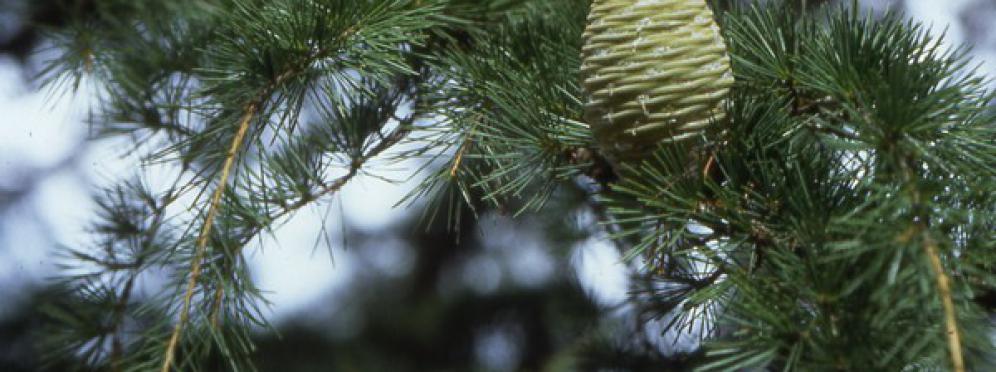Himalayan cedar
These are evergreen conifers native to the Himalayas, where they live at about 1200-3500 metres.

These are evergreen conifers native to the Himalayas, where they live at about 1200-3500 metres. They must have very particular conditions of light and humidity. In their natural habitat, they grow in groups, or associated with other species, according to the climatic conditions of the sites. In their original area, they may reach heights of 50-60 metres, with pyramidal canopies bending at the top. They have columnar trunks, with main horizontal branches that bend with age. Their needle-like, light green leaves are about 4-5 cm long, arranged in spiral fashion along the young shoots (macroblasts) and clustered in dense tufts at the ends of short spurs (brachyblasts).
The species was introduced into Europe in 1822, and is grown as ornamental in parks and gardens. In the Garden, the deodar cedar grows between the hillock and the Fountain of the Four Seasons. It was planted in 1828, and is particularly important because it was the first deodar cedar to be brought to Italy. This majestic tree bears the marks of past damage, especially in its top and large branches. In recent years, it has suffered from water stress, which occurred after lowering of the water table due to construction works nearby. To ensure the survival of this historic tree, complex operations of radical improvement and revitalization were carried out, and its roots are constantly monitored.






